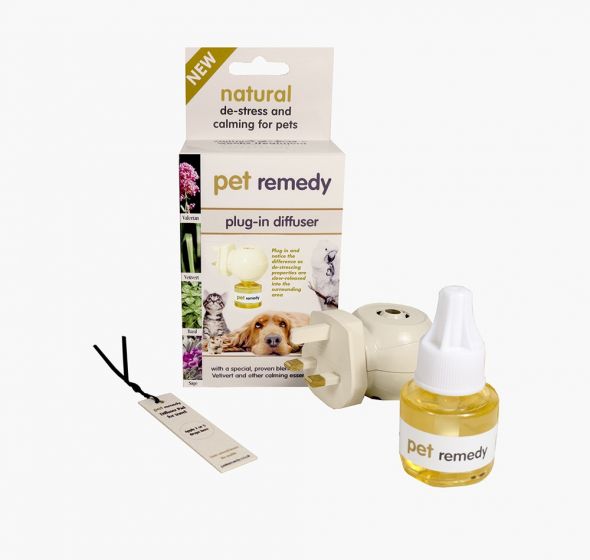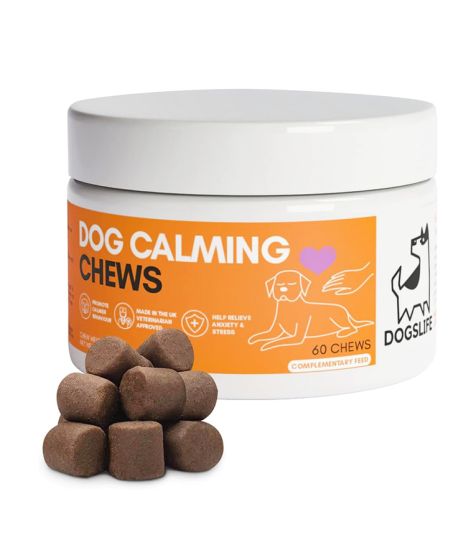
What Your Dog’s Behaviour Means: 36 Canine Messages Decoded
You cry when you’re sad, smile when you’re happy, and scream when you’re mad. Your puppy is no different.
Although we may not speak the same language, both dogs and humans show their feelings through actions. Even the slightest change in their voice, facial expression, or body position can communicate many things.
Understanding dog behaviour is an important part of pet parenthood as it allows you to catch medical issues early, provide them with the best possible care, and simply enjoy your canine companion’s love language.
This guide gives you an overview of 36 different behaviours that dogs display, explaining what each of them means.
Use of Voice
The most apparent dog behaviour changes you’ll notice revolve around the use of their voice. Here’s a rundown of what each signifies:
1. Howling
A howl is an “oww” sound lasting over 10 seconds that usually indicates loneliness, as dogs do this to make their presence known to other canines or even people.
Short howls mean they are excited or satisfied. Other forms of howls may mimic other sounds, like a siren, a violin, music, or another dog.
2. Barking
There are countless reasons why dogs bark. Loud and rapid barks may indicate aggression or that your pet senses danger. Meanwhile, soft and short barks are friendly gestures – a dog’s way of asking you to play with them.
3. Growling
This low-pitched, guttural sound typically conveys a warning, especially if accompanied by body signals that indicate the same, such as teeth-baring or aggressive barking.
However, some growls can be playful if they are louder and higher pitched than a threatening growl. A good example of this is the sound your pup makes during a tug-of-war with other canines. Remember that a friendly growl doesn’t come with teeth-baring or aggressive barking.
4. Yelping or Whining
A whine is a high-pitched yelp. Dogs may whine when they experience a sudden fright or physical pain. Puppies make this sound when they hurt themselves while playing with another canine.
If your adult dog whines, it could be because they are frightened, like when a stranger tries to touch them in the vet.
5. Grunting
A grunt is a sound that signals relaxation or contentment. You may hear puppies grunt while they are in contact with their mother and adult dogs when they greet or meet a familiar dog or person. Many dogs also grunt when they stretch or change their resting positions.
6. Whimpering
This soft, high-pitched sound is a form of communication dogs learn as early as puppyhood. Often, it is a call to indicate that they need something, like food or attention. It can also be a greeting ritual or a way to show their discomfort, like when they have been locked in a room or are in pain.
7. Panting
Panting allows dogs to expel heat from their mouths and regulate their body temperature. It may also imply that they are in pain.
If your furbaby appears to be having a hard time with the heat, be sure to offer them some water. Even better, have their dog feeding bowls filled up constantly so they can drink whenever they need to. Automatic water dispensers for pets are also worth a try.
Head Positions
The way your dog moves his head can also be his way of communicating an important message. Below is an overview of some of them:
8. Tilted head
Head tilting is your pet’s way of showing uncertainty. They do this while waiting for more information, especially during dog training.
It can also mean that your dog is listening to a sound and trying to determine where it is coming from.
9. Head pressed against the wall
If you see your pet pressing their head against a firm object or a wall, you should immediately bring him to the vet. This behaviour may indicate serious health problems, like brain disease or toxic poisoning.
Eye Actions
From squinting or blinking to the iconic “puppy eyes,” eye movements also serve as a way for your canine companion to communicate their feelings.
10. Squinting or blinking
Blinking is a calming behaviour dogs exhibit when stressed or uncomfortable. It is also their way of putting other dogs at ease.
Canines may also squint or blink if they detect anxiety from their human companion. This may be accompanied by barking or howling, which is their way of saying, “Everything is going to be okay.”
|
|
|
Pet Remedy Natural De-Stress & Calming Plug-In Diffuser 40ml |
11. Staring
Dogs open their eyes wide when they are alert.
If they stare at something with narrowed eyes, they could be trying to be threatening or dominating. If they start to show the whites of their eyes, it signifies they want to attack.
Conversely, if they only stare briefly before looking away, they are being polite or submissive.
12. Big pleading eyes
Big, innocent-looking eyes – more popularly known as the “puppy eyes” – are a dog’s way of getting your attention and expressing affection for you.
Ear Positions
Notice how your doggie’s ears droop or perk up? This section will help you understand the message behind these dog behaviour changes.
13. Raised or flattened ears
If your pet’s ears are perked up or pointed forward, they are currently aggressive or curious, maybe because they want to play with you or chase something. Conversely, your pet may be insecure or scared if their ears are flattened or positioned close to the head.
14. Flicking ears
Flicking dog ears signifies attention. If he does this, your pet may be simply listening to an unfamiliar sound.
Use of Their Nose
Dogs use their nose not only to sense danger but also to explore their surroundings. Here is a quick rundown of what dog sniffing means:
15. Sniffing the air, people, or other dogs
Because they have an exceptional sense of smell, dogs can learn a lot from the things they sniff. It can inform them of potential threats, prey, and other animals. They may also smell other dogs or people to see if they can be friends.
Mouth Actions
A dog’s lip, tongue and mouth movements also communicate a specific thing. Keep reading to understand the underlying message behind each one.
16. Biting
Puppy nipping happens when young canines are still learning to communicate with their pet parents. It usually occurs during playtime, training, or for no apparent reason.
When dogs bite, it can be because of fear, anxiety, or aggression. It would help to pay close attention to your pet and maybe offer some calming chews designed to relieve stress in dogs.
|
|
Suppose you can’t determine why your pet is nipping at you or can’t change such behaviour. In that case, you may need to seek help from a veterinarian, a professional trainer, or a dog behaviour consultant.
17. Licking
Licking indicates uncertainty or stress in dogs. It can also suggest that your canine buddy is sexually active. If you notice your pet licking other dogs, it could mean they’re trying to make friends.
Licking is a dog’s way to groom themselves. Of course, if it becomes excessive, it could signal something more. For example, excessive genital licking could signal a urinary tract infection.
18. Chewing
Ever notice your puppy chewing on things? This usually happens for puppies when their adult teeth start erupting. Chewing is their way of easing the discomfort and stress that they are experiencing.
If you have an adult dog who tends to chew on your shoes, floor mats, and other things they find on the floor, it could be because they are bored and need chew toys.
19. Yawning
While yawning is automatically attributed to sleepiness, a dog’s yawn could signify something entirely different. Besides showing interest in napping, it could also mean that your pup is stressed or afraid, like when you introduce them to new people. You must ease them into the situation and avoid rushing the introductions.
20. Tongue out to the side
Dogs are at ease or happy when they casually let their tongue hang out to the side of their mouths. This is typical dog behaviour when they are trying to play with you.
Of course, if this happens too often, you may need to consult a vet to check whether your pup is suffering from a condition known as “‘Hanging Tongue Syndrome.”
21. Muzzle wrinkling
Angry or aggressive dogs wrinkle their muzzle to send a warning and are ready to attack anytime. Stop whatever is causing this behaviour and move away from your dog when this happens.
Tail Actions
A dog’s tail also signals what they are feeling.
22. Wagging
Did you know that happiness is not the only reason dogs wag their tails? Tail wagging could communicate different things, depending on the direction and speed of its movement.
Here’s a quick guide to your pup’s tail-wagging language:
- High - alert or excited
- Out - neutral or exploring
- Down - submissive or concerned
- Wagging right - happy to see you
- Wagging left - angry
- Quick wagging - excited
- Slow wagging - less enthusiastic
- Short strokes - anxious or uptight
- Broad strokes - happier
23. Tail chasing
Tail chasing is a common, typically playful behaviour among dogs. But when your pets chase their tails and chew on them, it could be a sign of obsessive-compulsive disorder (OCD).
While this may not happen often, you must correct it immediately by distracting your puppy with a toy or dog treats. If this is ineffective, you should discuss it with your vet and consider dog behaviour modification methods to prevent your pet from hurting himself.
Use of Paws and Legs
Both puppies and adult dogs use their paws and legs to communicate different things. From digging to raising their paws, we’ll help you understand what each action signifies to help you better care for your fur baby.
24. Digging
Digging is quite common among dogs. It is an instinctual behaviour that they do for fun.
If your dog keeps digging in a specific area, it may be because he’s trying to catch an insect or burrowing animal. This is part of your pet’s hunting instinct. Still, if this behaviour isn’t causing much inconvenience, it’s best to let him enjoy it.
However, some canines also dig to cool themselves down – removing the hot topsoil to expose the cooler layer underneath. This also explains why some dogs sit in the place they dug up. When this happens, consider checking out some dog-cooling apparel and accessories. There are some great options, like cooling pads, bandanas, and cooling mats, that can help your dog cool off without wreaking havoc on your garden.
|
|
25. Standing on hind legs
Dogs look absolutely adorable when they stand on their hind legs simply because it is their way of showing their affection. It means they want you to hug them or seek a treat.
Sometimes, canines also stand on their hind legs for a more practical reason (i.e., to get a better view of their surroundings).
26. Raising paws
Raised paws are canine speak for “I want to play.” It can also be a request for something (e.g., a treat) or a show of their affection. This behaviour is more common among younger dogs.
Body Language
Dogs’ body language expresses essential things about how they feel. You need to understand these expressions not only for yourself but also for your pet.
27. Belly exposed
An exposed belly is a show of respect or playfulness. It can mean that your pet is asking you for a belly rub or a way to indicate that they are under attack.
28. Circling before lying down
Did you notice how dogs circle a place before they lie down? Canines often do this when they are trying to find the most comfortable resting spot.
It could also signify that your pet is experiencing pain in a particular part of his body and is trying to find the best position that won’t hurt as much.
29. Bum scooting
Bum scooting may look funny, but it is actually a concerning behaviour for pet parents. When dogs rub their bottom on the ground, it’s possible that something is irritating their anal glands.
If your dog frequently shows this behaviour, it’s best to bring him to the veterinarian.
30. Mounting (Humping)
Although this seems like sexual behaviour, it is not always the case. In fact, dog humping during puppyhood is a sign that it’s time to wean off your young canine pal.
Contrary to common belief, mounting is not a show of dominance either but is, instead, an attention-seeking behaviour and a showcase of non-sexual excitement. Often, it’s just a dog’s way of playing with other dogs, people, or objects.
31. Sitting between your legs or on your feet
A dog sitting between your legs or on your feet is not trying to show dominance. Often, they do this when they feel nervous and want to stay close to you to feel safer.
If you notice your pet exhibiting signs of anxiety, talk about the issue with your vet or dog behaviour consultant. You can also try some dog-calming products, especially during situations that make them afraid or stressed out like fireworks and thunderstorms.
|
|
32. Raised hackles
Hackles refer to the fur that runs along a dog’s spine. When your pets raise their hackles, it’s a sign that they are insecure, angry, afraid, or threatened. It also indicates that he’s ready to pounce at any time to defend himself, so approach with caution.
33. Crouching
When dogs crouch, they are either insecure, frightened, nervous, or preparing to catch prey. Sometimes, they also do this to show that they want to play.
34. Bowing
Dogs bow by lowering their front body, particularly the chest and head, while keeping their rear up. If a bow is accompanied by hip wiggling and tail wagging, they initiate play.
35. Stretching
Dogs stretch their bodies close to the ground to act playful or show love for you. You will notice them stretching when you arrive home after being away because they’re glad you’re back.
36. Pacing
Dogs pace when they are excited or nervous. If they exhibit this behaviour frequently, there’s a good chance that they are bored and need playtime, especially if they run circles around you.
Understand Your Dog’s Language
Understanding your dog’s behaviour means getting closer to them. By picking up on their signals, you can keep them happy and healthy and strengthen your bond.
Show your love and care for your puppy with Pet’s Delight. We curate tried-and-tested dog healthcare brands to ensure your beloved canine family members are in perfect shape.
- 184






